Home » field trips
Category Archives: field trips
ROV driving experience
Students in the third year of the Geology Degree of the course “Geophysics and geophysical prospecting”, under the supervision of Professor José Enrique Tent Manclús, carried out practices in the University of Alicante Ducks pond to learn how to drive a ROV. The picture show some students trying to understand the ROV commands (left).

Sorbas field trip Alicante Marine Sciences 2023
This year the students of the third course of Marine sciences of the Alicante University visit the Mesa de Rodan, Cabo de Gata, and Sorbas basin on November 2nd and 3th of 2023.
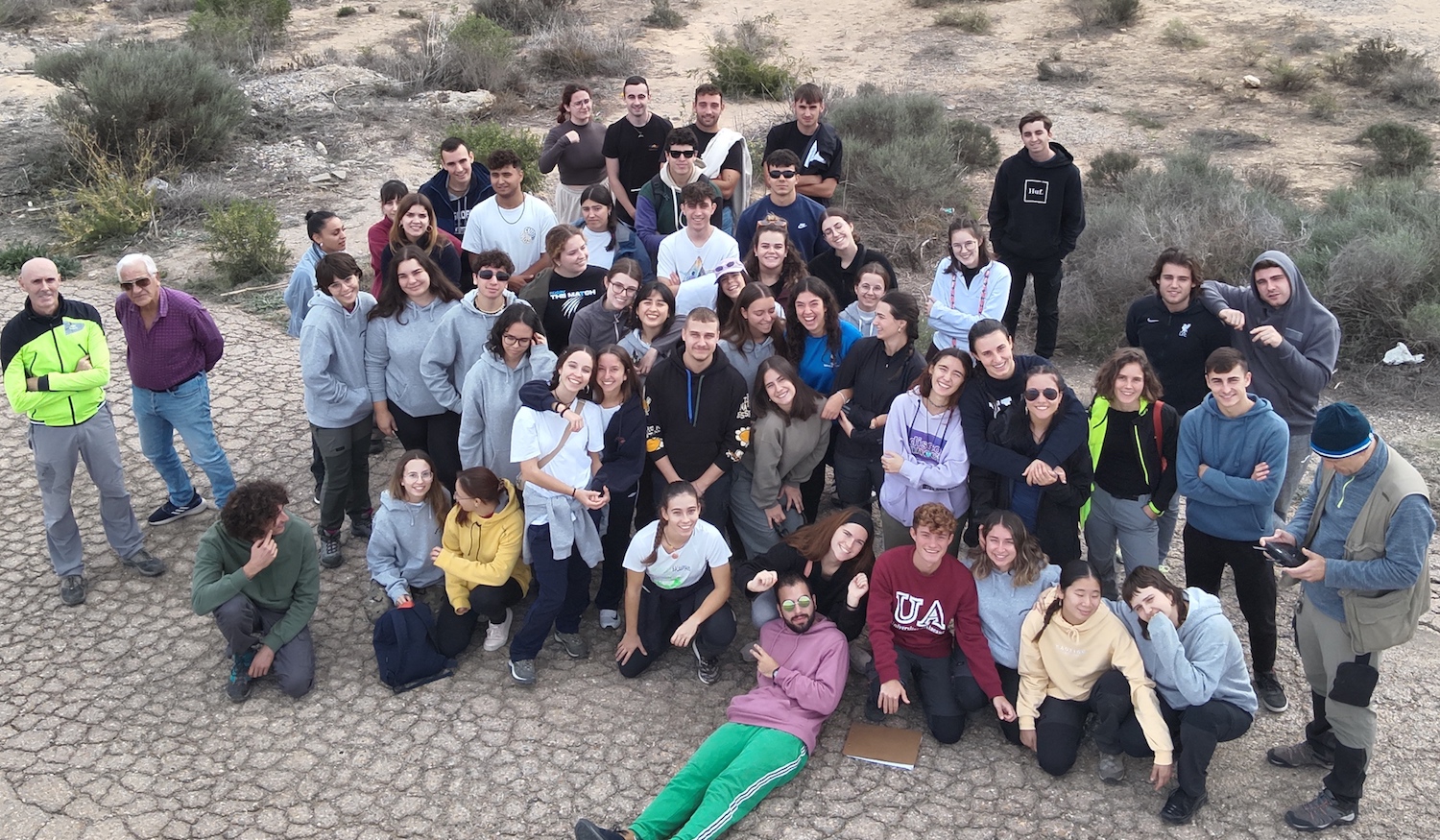
The picture show the student visiting the Sorbas gypsum karst (Almeria).
The professors of the subject were Antonio Estévez, Manuel Martín-Martín, David Bonomo, and José Enrique Tent-Manclús.
Students of Alicante University do marine geology practice in Torrevieja
Last March 4th, 2023, students in the third year of the Geology Degree carried out practices aboard the “Rosa de Abril” boat from the Torrevieja harbor . The practice was focused on different aspects of “Geophysics and geophysical prospecting”, under the supervision of Professor José Enrique Tent Manclús. This academic we have returned to sail as before the pandemic.
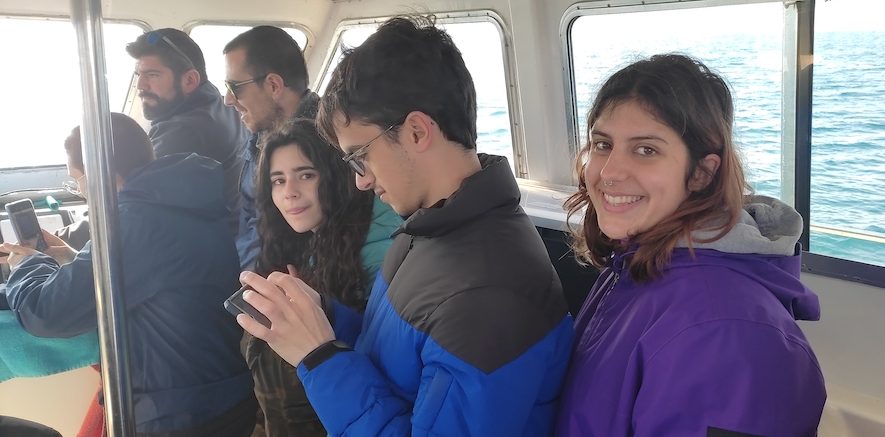
Field trip to Teruel
This academic year 2022-23 we have returned to Teruel Paleozoic as before the pandemic. The geology students of Alicante University third course within the subject of Regional Geology: visit Montealegre del Castillo triassic section (Albacete), Aguilon Jurassic section (Teruel), Murero Cambrian Rambla Valdemiedes section (Zaragoza), Luesma Ordovicic to Triassic section (Teruel), Santa Cruz de Nogueras museum “Paleozoic Seas Museum” (Teruel), Ojos Negros iron-ore quarry (Teruel) and Checa-Orea road Ordovicic-Silurian section (Guadalajara).
The picture shows all the students on the Tertiary erosional surface on top of the Murero section (Zaragoza province).
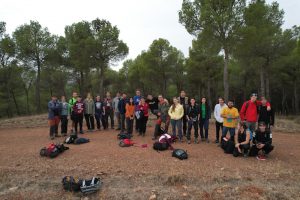
The second picture show students in the Murero Cambrian Rambla de Valdemiedes section.
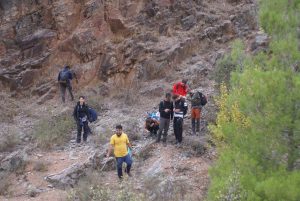
Field trip to Faro de Rondan (Almería)
This year the students of the third course of Marine sciences of the Alicante University visit the Sorbas basin, Cabo de Gata, and Mesa de Roldán on November 3th and 4th of 2022.

The picture show the student visiting the Faro de la Mesa de Roldan (the lighthouse).
The professors of the subject were Antonio Estévez, Manuel Martín-Martín and José Enrique Tent-Manclús.
Sot de Chera field trip
Students of the third course of Geology of the Alicante University within the subject of Regional Geology: visit Jarafuel triassic section, Montealegre del Castillo triassic section, Sot de Chera Jurassic section and Monduver geologic dome.
The picture shows the in the Chulilla health resort section near by Sot de Chera (Valencia province)

Field Trip to Almeria
This year the students of the third course of Marine sciences of the Alicante University visit the Sorbas basin, Cabo de Gata, and Mesa de Roldán on November 4th and 5th of 2021.
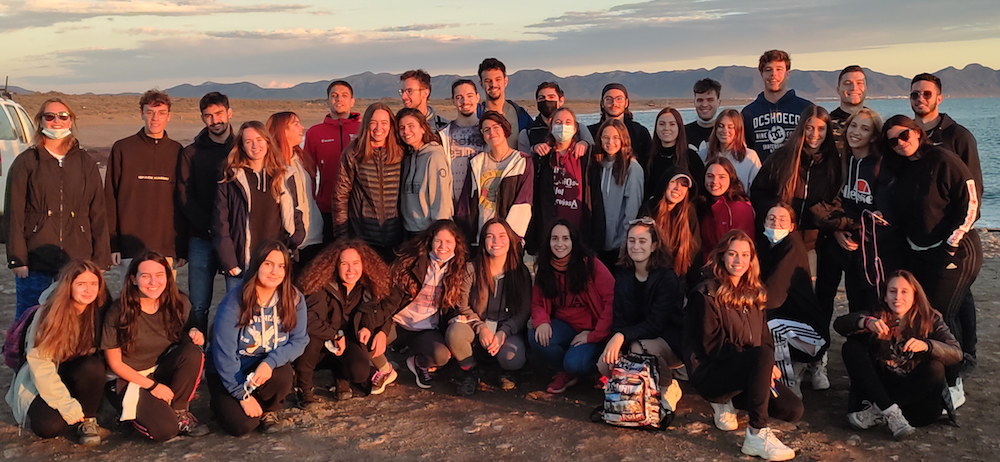
The picture show the student visiting the Torregarcia beach and the Roman remains of a cetaria (a marine factory).
The professors in charge were Antonio Estévez, Manuel Martín-Martín and José Enrique Tent-Manclús.
Marine Geology field trip to Sorbas (post-pandemic)
This year the students of the third course of Marine sciences of the Alicante University, could not go for a field trip on November as previous years, visiting the Sorbas basin, Cabo de Gata, and Hoyazo de Nijar. When the courses ended on May most of the students did the visit. The visit took place on 27 and 28 of May of 2021.
The field trip was strange because of the new normality and also the rain comes to Almeria during the visit.

The professors in charge were Juana Jordá, and José Enrique Tent-Manclús.
Students of Alicante University do marine geology practices in Denia
Last February 6, 2020, students in the third year of the Marine Geology Degree carried out practices aboard the “Guadalupe” boat. This 12m-length boat assigned to the City of Dénia by the Court of Instruction number 3 of Dénia by the Judge Javier Reyes, is dedicated not only to surveillance tasks of the Marine Reserve of the Cape of San Antonio, but also to operations of pollution control and scientific monitoring of the protected area.
The practice was focused on different aspects of “Geophysics and geophysical prospecting”, under the supervision of Professor José Enrique Tent Manclús. Within a research program of the Multidisciplinary Institute for the Study of the Environment “Ramón Margalef” (IMEM) of the University of Alicante that together with the City Council of Dénia and the National Parks Autonomous Organization operate the Montgó-Dénia Scientific Station (ESCIMO-Dénia).
Taking advantage the good conditions at sea, marine geophysics equipment was tested, specifically a high-resolution marine boomer equipment linked to a differential GPS. The practice was to leave the port, perform the boot sequence and navigate acquiring data. Through sound waves, this equipment allows interpreting the geometry of the layers below the seabed using the same principle as the medical ultrasound, which was precisely developed from this marine technology. Like 2d ultrasound, experience and practice are required for interpretation.
In this first marine campaign, it has been tested the equipment adjustment settings to obtain a better results. The students have been able to see in situ how the equipment studied in the classroom works and, above all, have a first contact with work in the marine environment, much more hostile than the terrestrial to carry out any study.
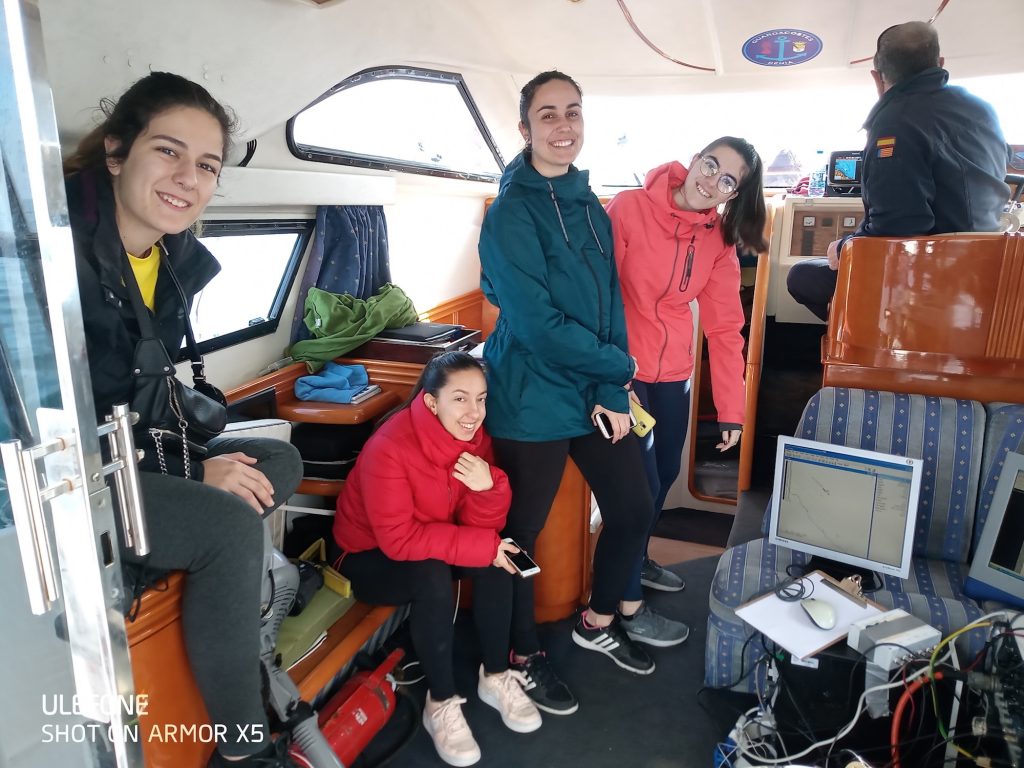
The marine area of the San Antonio Cape is the extension of the rocky massif of Montgó. The equipment is intended to see the thicknesses of the sandbars and / or sediments trapped by the Posidonia oceanica, above the rocky bottoms. In a future campaign will be locate and delimit the bodies of sand and how they change to areas without sand. In the deepest parts it is expected to be able to locate some level of marine terrace formed when the sea level was lower as a result of the last glaciation. At the last glacial maximum, 18,000 years ago, the sea level was 120 m below the current level. A warming began that caused a rise of 1 to 2 cm a year, but about 14,000 and 11,700 years ago the global climate cooled, which stopped the ascent. This generated rocky coasts that are currently marine terraces between 70 and 60 m deep. After this cold interval known as the “Younger Dryas”, the level rose to reach its current position about 6000 years ago. Younger Dryas terraces have already been located in the coastal area Tabarca Island (South coast Alicante) and in the near future it is intended to study these terraces in the area of San Antonio Cabe.
This study of marine geology together with others of a biological and physical-chemical nature, promoted by the Montgó Scientific Station (ESCIMO-Dénia), not only seeks to improve the knowledge of a very interesting area at the geological level but also to lay the foundations for a proposal to expand and improve the fishing resources for the artisanal fleet around the Marine Reserve as well as the promotion of sustainable activities such as diving.
Marine Geology field trip to Nijar and Sorbas
As the last year, students of the third course of Marine sciences of the Alicante University visit the Sorbas basin, Cabo de Gata, Hoyazo de Nijar, and Cerro del Espíritu Santo of Vera. The visit took place on 7 and 8 of November of 2019.
The visit was organized by Antonio Estévez, Santiago Moliner, and José Enrique Tent-Manclús.

Student group before entering the Sorbas Cave.

Recent Comments